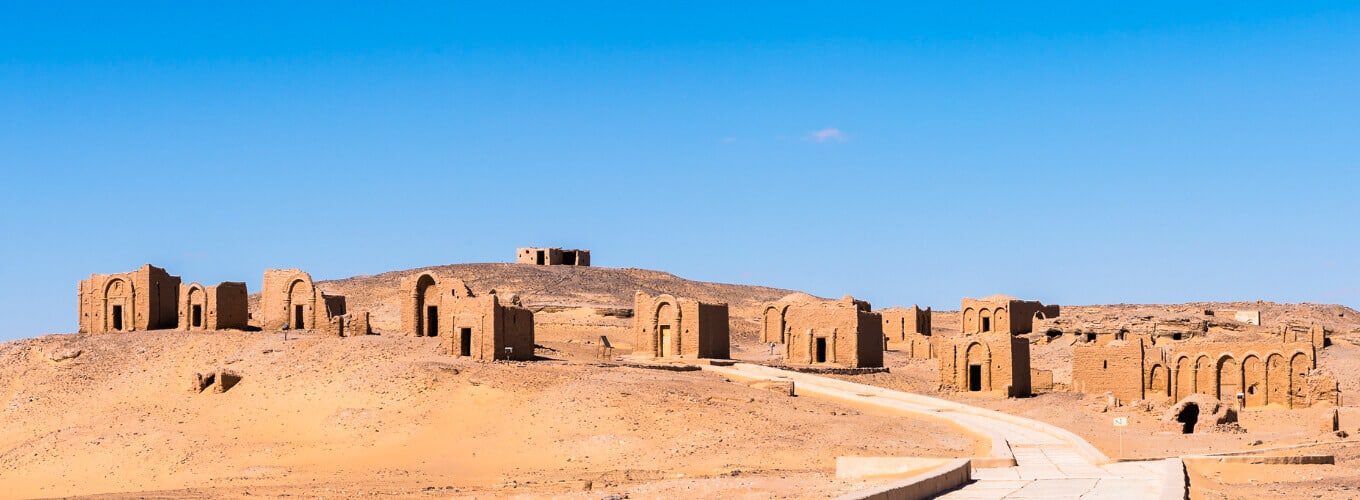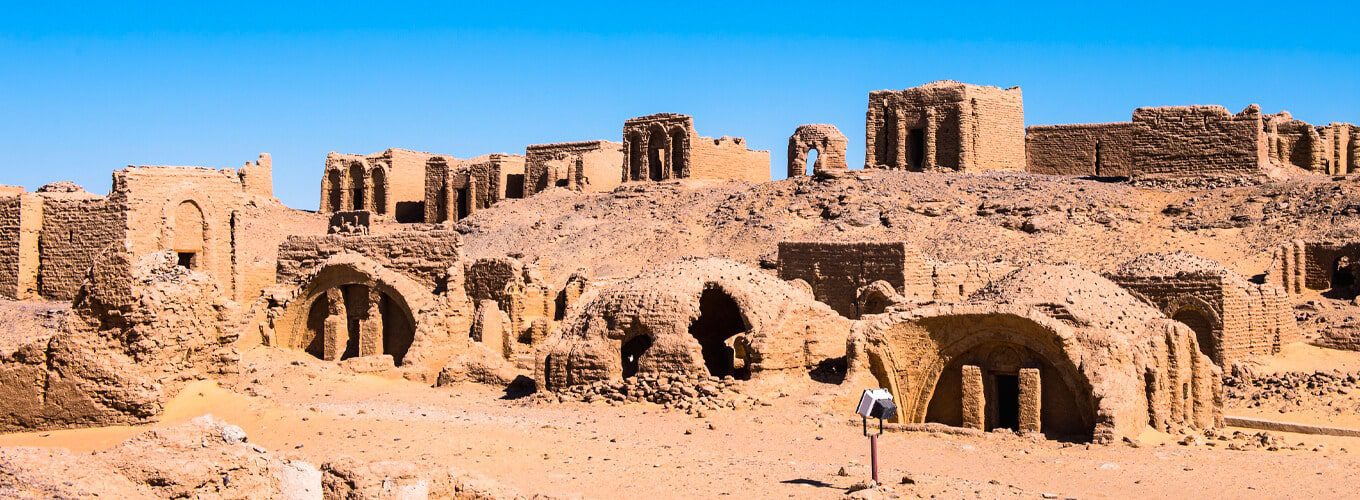The Necropolis of al Bagawat is located in the Kharga Oasis, a desert region in southern Egypt. It’s one of this area’s most important archaeological sites and dates back to ancient times (c. 3rd century BCE).
The site was discovered by British archaeologist Flinders Petrie in 1892 while he was excavating other nearby areas such as Dakhla Oasis and Qasr Ibrim. He noted that many tombs were here but didn’t have time to explore them fully because he had other projects at other locations.
Later on, another British archaeologist named David Lorton visited al-Bagawat and began excavation work on some of these tombs; however, he didn’t finish before his death, so his work remained incomplete until more recent times when archaeologists from Egypt took over again under President Hosni Mubarak’s rule (1981-2011).

The Tombs of al Bagawat
The Necropolis of al-Bagawat is located in the southwest corner of the Kharga Oasis. It consists of several tombs, which date back to different periods and belong to other social groups. The most important tombs are those belonging to members of the royal family, including King Apries (570-526 BC), who was buried here after his death at Naucratis; Queen Amenhotep II (5th century BC), daughter of Psammetichus I; Prince Mentuemhet III (4th century BC) and Princess Nefertari II (2nd century BC). Other types include:
- Mastabas – rectangular burial chambers with sloping sides built above ground level.
- Pyramids – several tiers rising from a square base towards an apex.
- Funerary temples – buildings used for offering food and drink offerings after death.
The Excavations of al-Bagawat

A team of archaeologists from the University of Chicago and the American Research Center in Egypt excavated at al-Bagawat. The project began in 1956 when Professor Richard B. Parkinson discovered a necropolis dating back to the Old Kingdom period (c. 2613-2181 BCE). This was followed by further excavations led by Dr. William C. Hayes in 1957, who uncovered numerous tombs belonging to high officials and priests during this period.
The artifacts found during these excavations include several statuettes made from limestone or alabaster; wooden funerary masks; jewelry made from silver, bronze, gold, and semi-precious stones; pottery vessels such as amphorae used for storing wine or oil; tools used for preparing food offerings such as knives and spatulas; clothing including linen garments worn under their mummy wrappings; amulets made with precious metals such as gold which protected them against evil spirits while they were alive on earth but also helped guide them through death after burial so that they could reach eternal life in heaven where Osiris ruled over all other gods who lived there too!
The Legends of al-Bagawat
The Necropolis of al-Bagawat is also home to many legends. The most famous is that of Isis and Osiris, who were married in this very place. According to Egyptian mythology, Osiris was murdered by his brother Set and then dismembered into 14 pieces scattered across Egypt. Isis found all but one of these pieces (his penis) and used them to resurrect him after three days so that they could conceive Horus together.
Other famous myths surround Hathor and Horus: Hathor was an ancient goddess associated with love, fertility, and music, while Horus was her son born from the union between herself and Osiris after his resurrection by Isis’ magic spells!
The Artifacts of al-Bagawat

The artifacts found at al-Bagawat are a treasure trove of information about the people who lived there. The statues, paintings, and jewelry all tell us something about the culture of this ancient desert community.
Status: The most striking of these artifacts are two life-size statues made from basalt rock (volcanic stone). They depict men wearing short loincloths and holding staffs in their right hands; one is bearded, while the other has no beard or mustache. These statues were probably used as part of religious ceremonies at al-Bagawat during its heyday between 1500 BC and 1000 AD.
Paintings: Several wall paintings have been discovered at Kharga Oasis throughout history; however, none have been dated earlier than 1000 AD, which makes them relatively recent compared to some other sites in Egypt where similar styles have been found dating back thousands of years earlier than that period!
The Importance of al-Bagawat
The Necropolis of al-Bagawat is an important archaeological site that preserves ancient Egyptian culture and history. The Necropolis has been designated as a World Heritage Site by UNESCO, recognizing its unique value as one of Egypt’s most important tourist attractions.

Visiting al-Bagawat
Al-Bagawat is located south of Kharga Oasis, about 30 kilometers from Dakhla. It was built during Pharaohs Amenemhat III and Ramses II (12th Dynasty). The Necropolis consists of a temple dedicated to Amun-Ra and several other buildings, such as storerooms and houses for priests.
Visitors can enter the site through its main gate, which leads into a courtyard with several columns made from limestone blocks. After walking through this courtyard, you will reach another one with two obelisks on either side; these were initially erected at Karnak Temple but later moved here when al-Bagawat was abandoned during Roman times because they were deemed too sacred for anyone else but Amun-Ra himself!
The most exciting part about visiting al-Bagawat is its well-preserved underground tombs, where many mummies have been found over time (including those belonging to nobles from Upper Egypt). You’ll also see some hieroglyphic inscriptions carved into walls throughout different areas inside this Necropolis; these provide valuable information regarding daily life back then, such as taxes paid by peasants working fields owned by nobles living nearby.”

